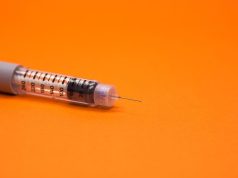2,328 percent increase in naloxone orders found in Ohio Medicaid population after policy implementation
MONDAY, Feb. 3, 2020 (HealthDay News) — A change in the law allowing pharmacists to dispense naloxone correlated with a large increase in the number of naloxone orders dispensed in Ohio, according to a study published online Jan. 31 in JAMA Network Open.
Neha S. Gangal, from the Winkle College of Pharmacy at the University of Cincinnati, and colleagues performed a segmented regression analysis of an interrupted time series for 30 consecutive months to examine the change in naloxone dispensing rates before and after implementation of an Ohio law allowing pharmacists to dispense naloxone without a prescription in accordance with a physician-approved protocol. Data were assessed for Ohio Medicaid naloxone claims and Kroger Pharmacy naloxone claims for all 88 counties in Ohio.
The researchers found that after implementation of the policy, there was a 2,328 percent increase in the number of naloxone orders in the Ohio Medicaid population, from 191 to 4,637. Compared with the prepolicy period, after the policy was implemented, the rate of naloxone orders dispensed per month per county increased by 4 percent in the Ohio Medicaid population and 3 percent in the Kroger Pharmacy population. After policy implementation, the rate of naloxone orders dispensed increased by 18 percent per month in low- versus high-employment counties in the Ohio Medicaid population.
“Our study shows that this change in the Ohio law allowed pharmacists to have more opportunity to participate in the management of patients addicted to opioids,” a coauthor said in a statement.
One author disclosed financial ties to the pharmaceutical industry.
Copyright © 2020 HealthDay. All rights reserved.








